Ever wondered how we create the quirky, humorous characters in ScreenPlay? Consider this post a behind-the-scenes look at the filmmaking process—yes, a movie within a movie. Get it? Alright, moving on.
The Creative Process
Our journey begins with the card mechanics. Before any illustration starts, we define these mechanics and use placeholder artwork to embody the core concept of each card. Take “Wake and Roll,” for instance. The initial idea featured a bear comically propelled from bed into action, embodying the sudden call to adventure.
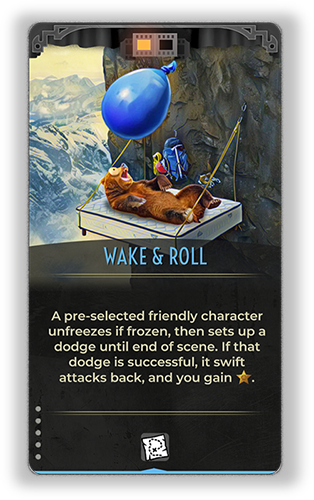
Illustrating the Drama
For “Wake and Roll,” it was crucial that the artwork captured both the readiness for danger and the potential for failure. We envisioned an anthropomorphic bear from the world of Jaw-Z, mistakenly offending Queen Bee and facing a retaliatory swarm of bees. An alarm clock designed as a honey bee hive and the bear desperately reaching for bee spray enhance this scenario. Will he manage to grab the spray in time or succumb to the buzzing foes? This cliffhanger mirrors the card’s mechanics, where a selected character can dodge an attack, counterstrike, and earn a story point.
From Sketches to Final Art
Our artist, Kevin, translates these ideas into two initial sketches, from which we select one to develop further.
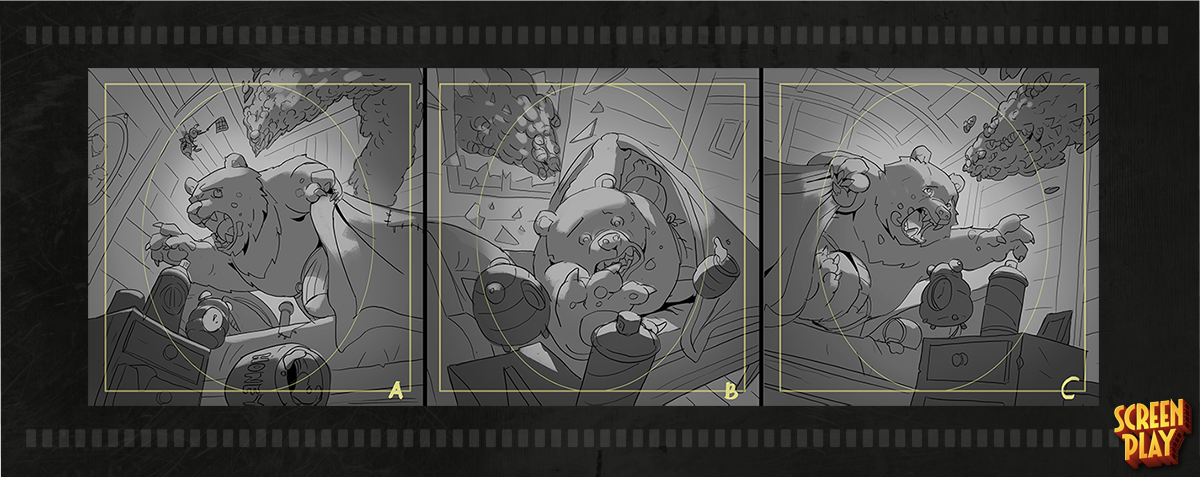
After finalizing a sketch, Kevin crafts a rough color version to integrate the artwork seamlessly into the game, allowing for adjustments before the final rendering. This approach ensures that the artwork is not only effective but also resonates with the gameplay experience without rush.
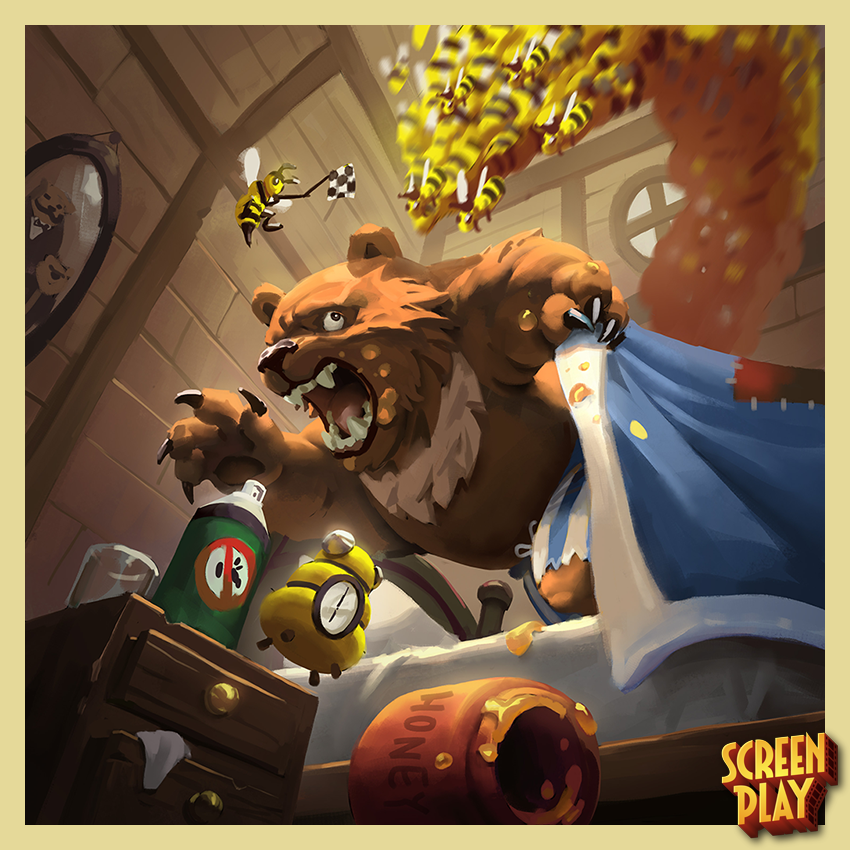
Here’s a look at the final polished version and its implementation in the game.

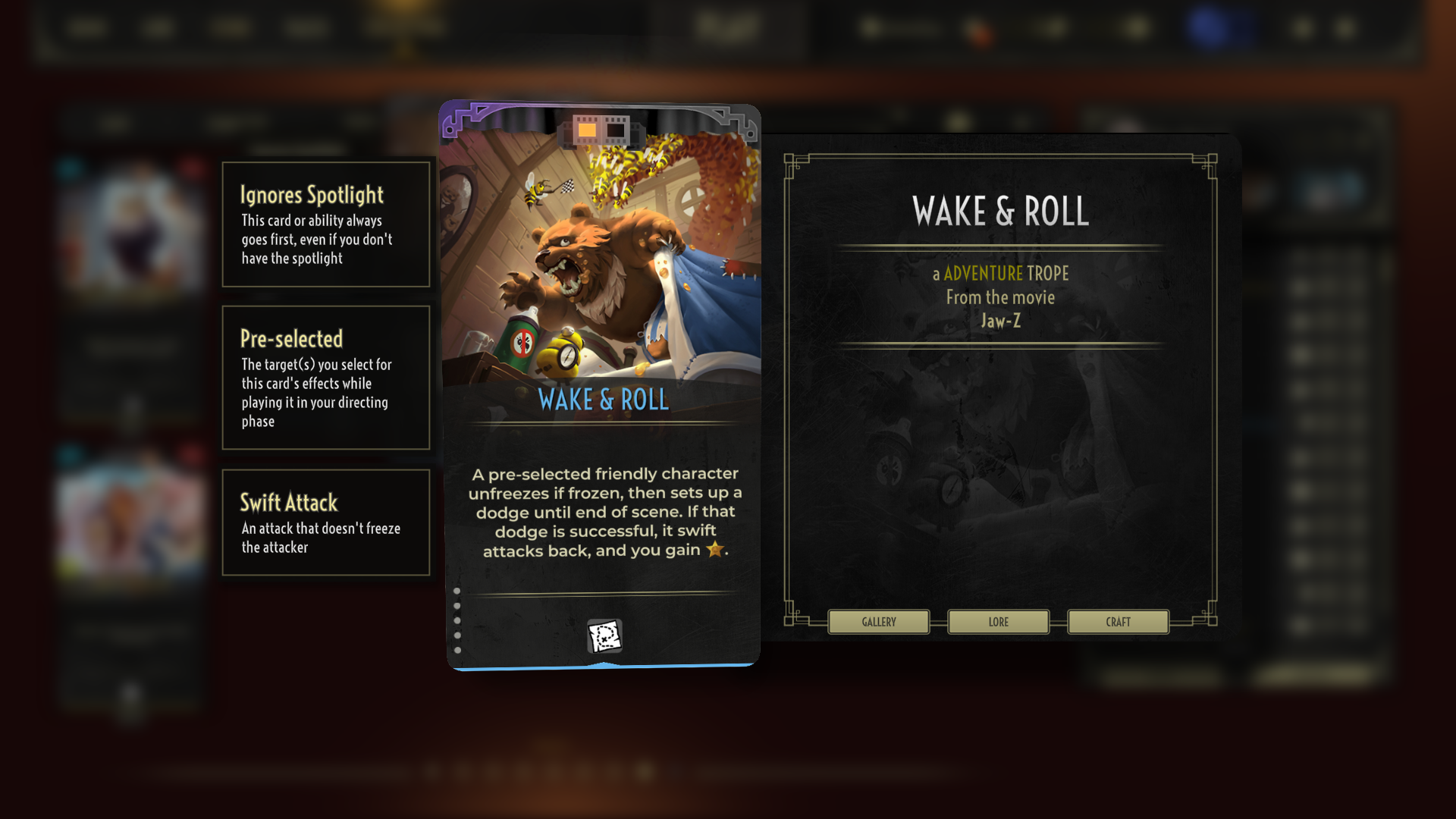
Designing the Movie Set Universe
Our process extends to other aspects of the game’s world, like movie sets. Our artist, Sam Kemp, sketches out initial designs which are then blocked out in 3D for optimal lighting before the final paintover.
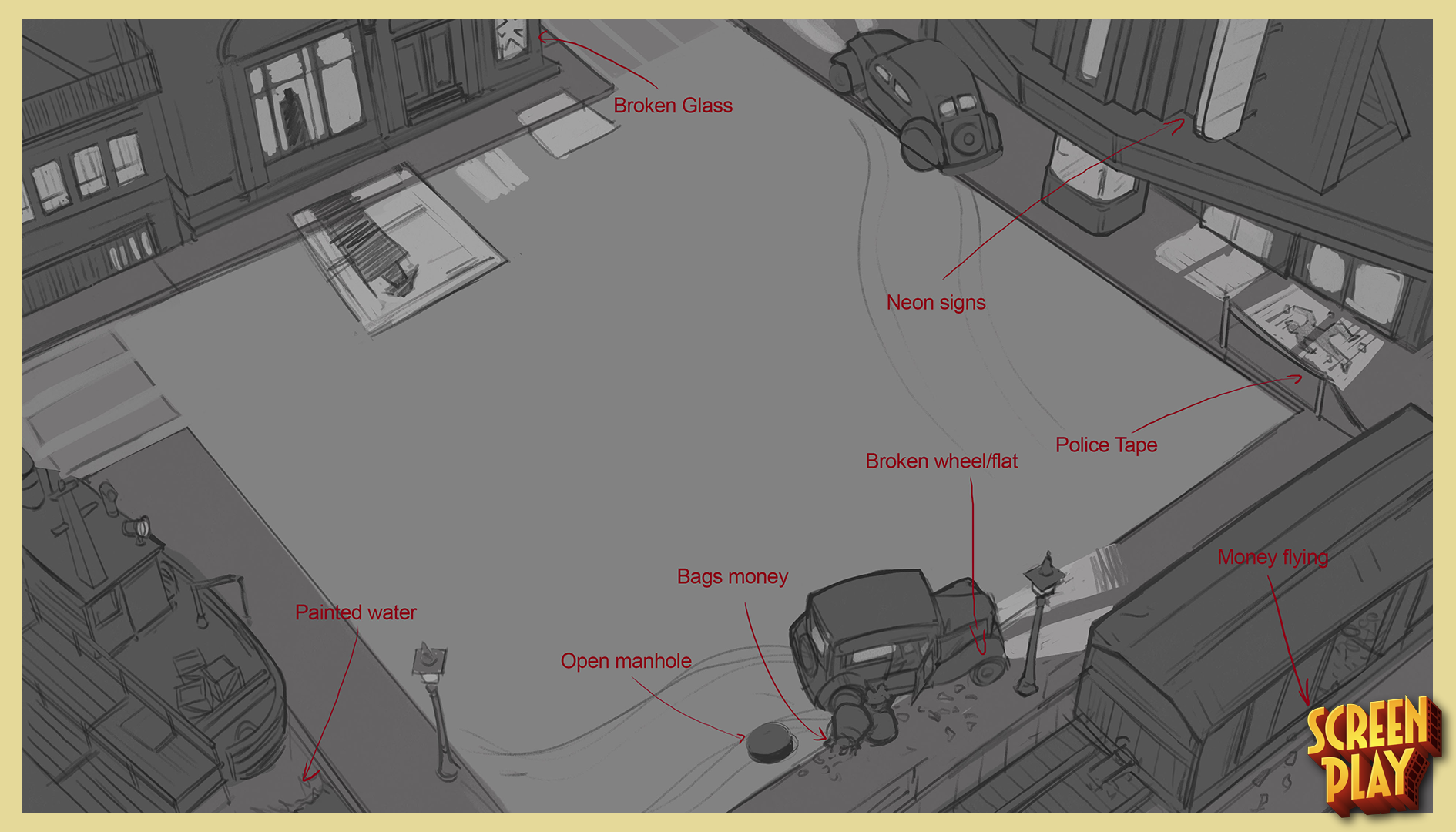
Sketch Stage

Blockout Stage
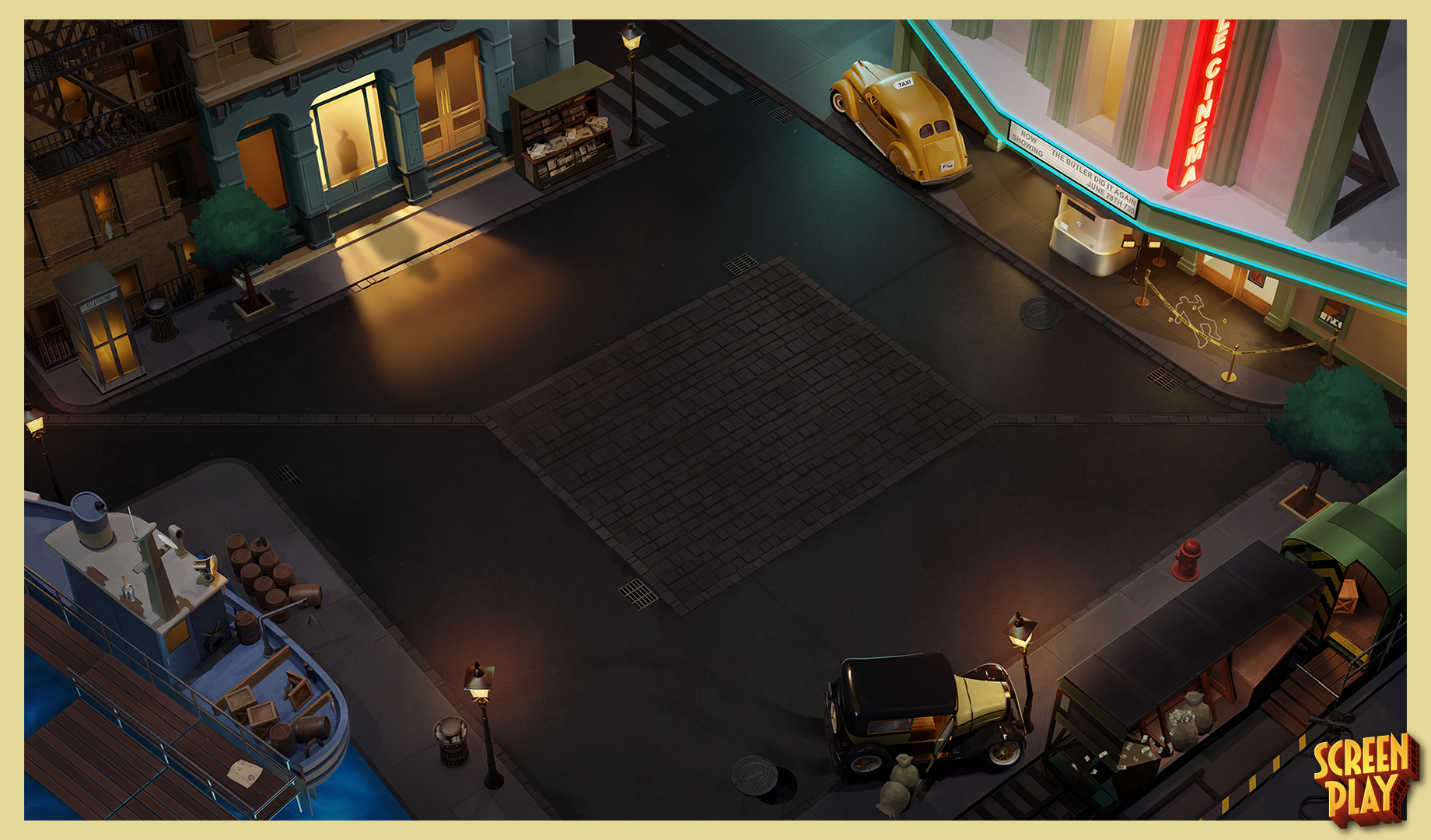
Final Version
Once the final version of the movie set is complete, we meticulously segment it into layers and animate various elements to infuse life into the scene. We employ shaders to animate certain components, while others utilize Spine for smooth, realistic movements.
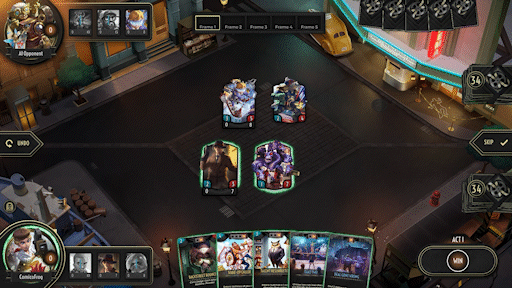
Animated Version in game
Illustrating the Card Backs

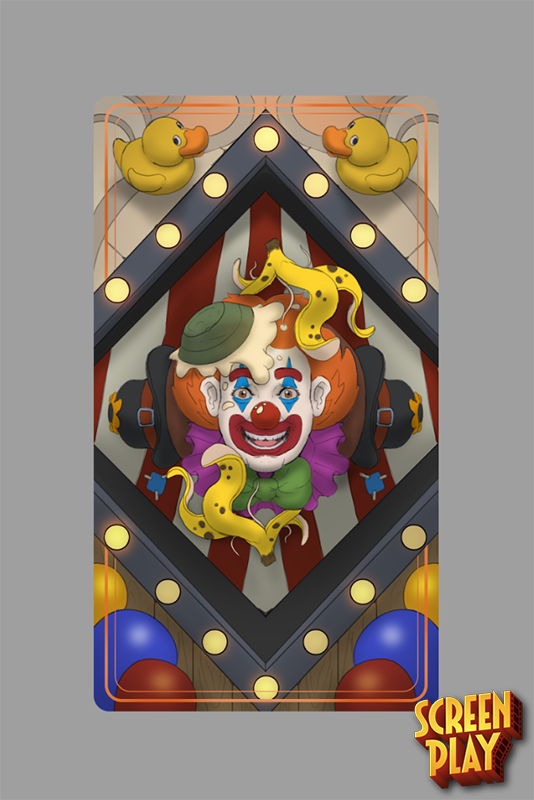
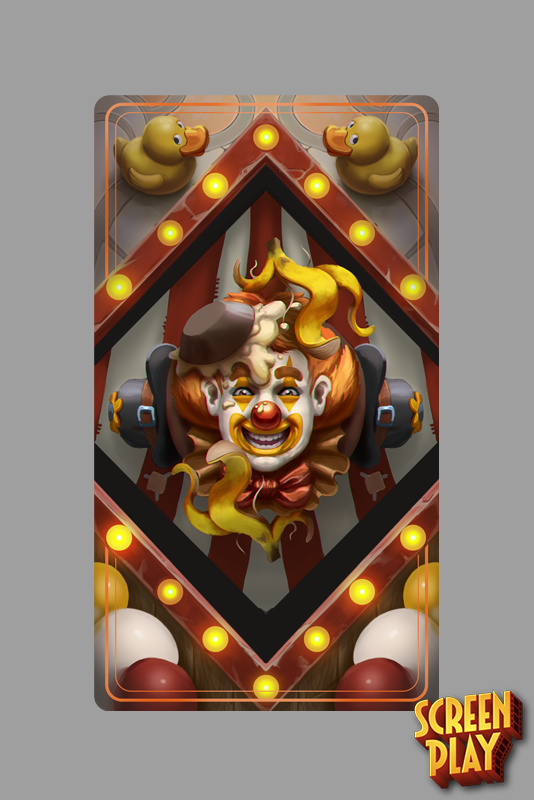
A Note on AI Artwork
While some AI-generated artwork currently serves as placeholders, we’re committed to replacing these with original creations. All placeholder art is clearly marked with a watermark in the game’s collection view and noted in the lore for full transparency.
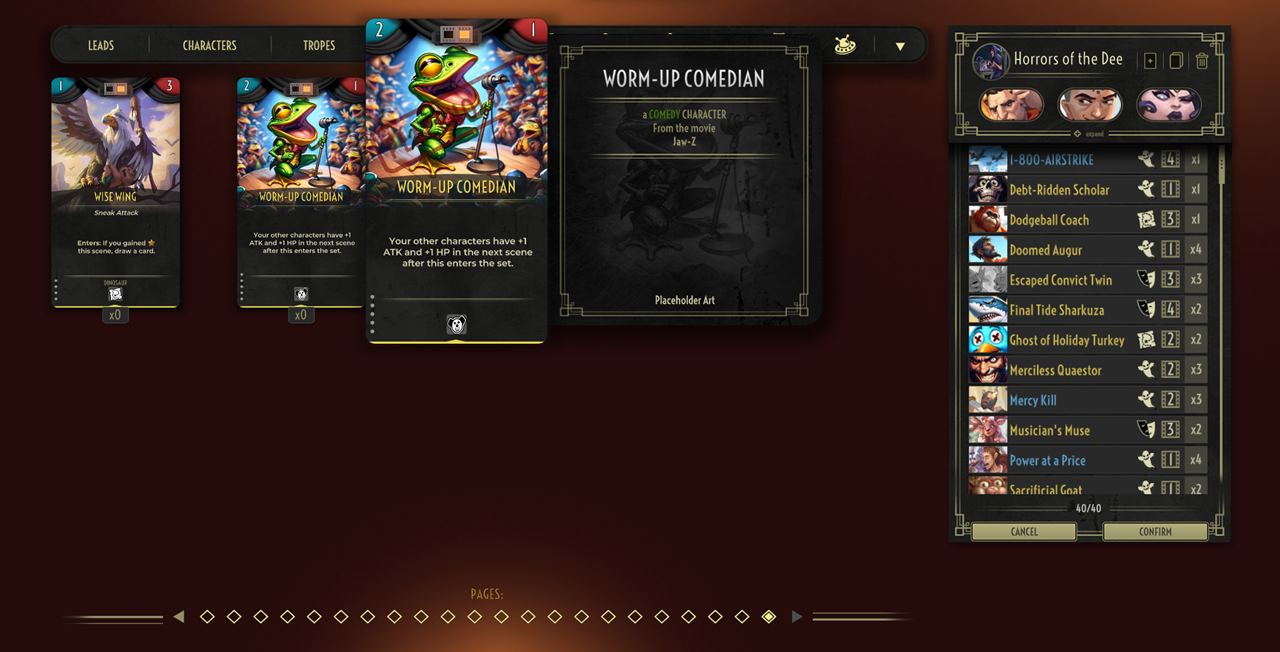

Looking Forward
There’s much more going on behind the scenes, especially with VFX and animation that demand unique artistic contributions. We’ll share more about these processes in future posts.



